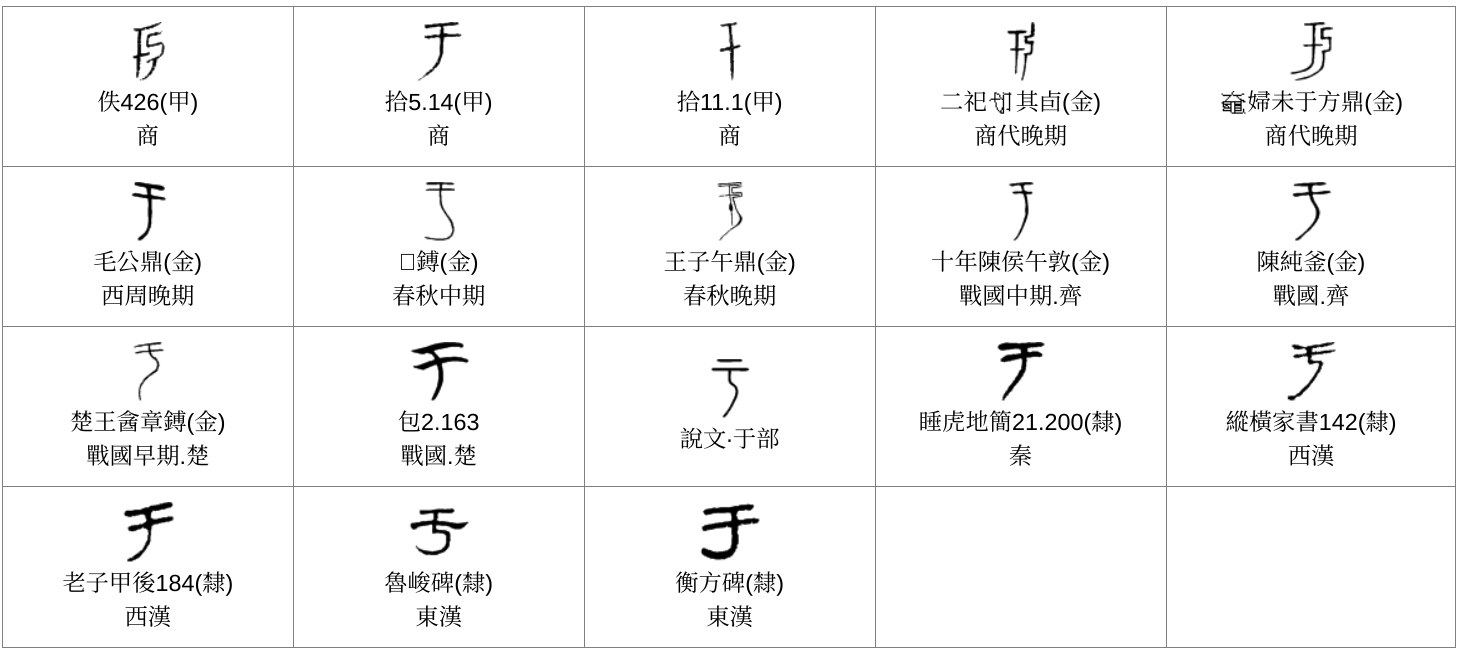I am currently doing my research right now for the glyph origin of the character 平 (píng; flat, even, level; peaceful) (Baxter-Sagart OC: /*breŋ/) and I would like to know what the origin of this character is.
I did some digging around on sources on what they say the origin of 平 just to find that a lot of sources say it currently has an unknown origin on formation but was used to mean "flat, level" in ancient scripts. (李学勤《字源》 p.425,The Outlier Linguistics Dictionary of Chinese Characters). When I tried to look up this character in 說文新證, there was no entry written for this character on there, unless if I skipped a page.
However, despite already knowing that this character's origin is currently not clear, I would like to know what is the most possible origin of this character is.
I did my own research on the character's origin starting from seeing how the character looks in ancient forms but however, I've noticed that the shape of this character almost stayed consistent through out its evolution with the exception of the small seal script. For refrence (from 小學堂):

When I was looking at the ancient forms, I noticed that one of the bronze inscription forms seems to be almost reminiscent of 于 (yú; in, on, at; go to; originally depicts a wind instrument) (Baxter-Sagart OC: /*ɢʷ(r)a/) in a way. For comparison, again (also from 小學堂):

When comparing their old Chinese phonology however, the two don't seem related at all.
So in my theory or educated guess (likely not true), 平 seems to created from 于, or likely 亏, with 八 either placed as a distinguishing mark or as some mark added to this character to represent the "sound" that is coming out from the wind instrument when played or blown into.
I can't really draw this conclusion yet since other ancient forms for this character contradict this own theory of mine since some other ancient forms of 平 sometimes have a line above them or an extra 八 mark at the bottom.
So if anyone can help me out with this research of mine, it would be heavily appreciated! :)
Also just to note, I'm aware that there are some theories/explanations (漢語多功能字庫 says that this character represents the breath and coming out smoothly with 一 added to indicate the steadiness of the breath; the classic 說文解字 says it is composed of 亏 and 八, with 八 being used to represent division.) for this character but I am unaware if any of them are true, which is why I am currently researching this character's origins or at least the most convincing one that might be true since I know the origin is currently unknown.